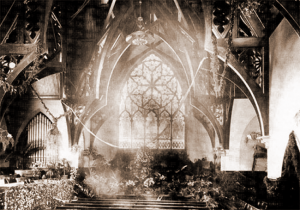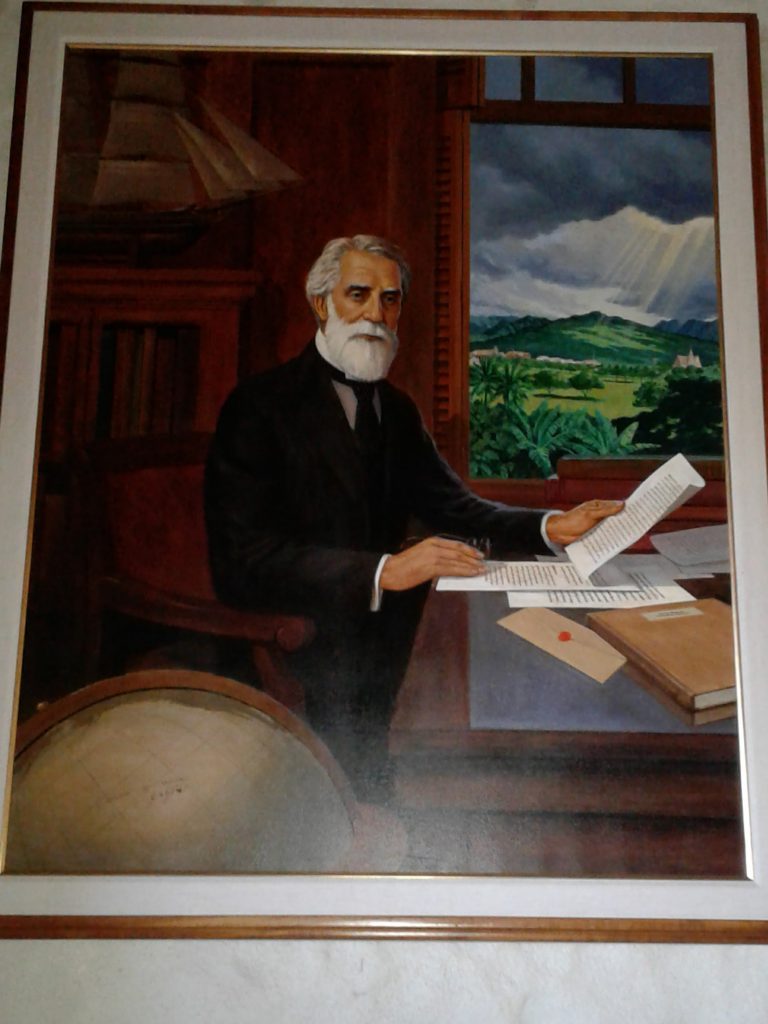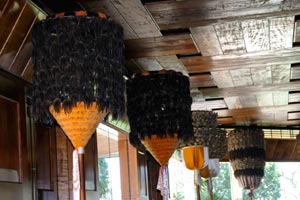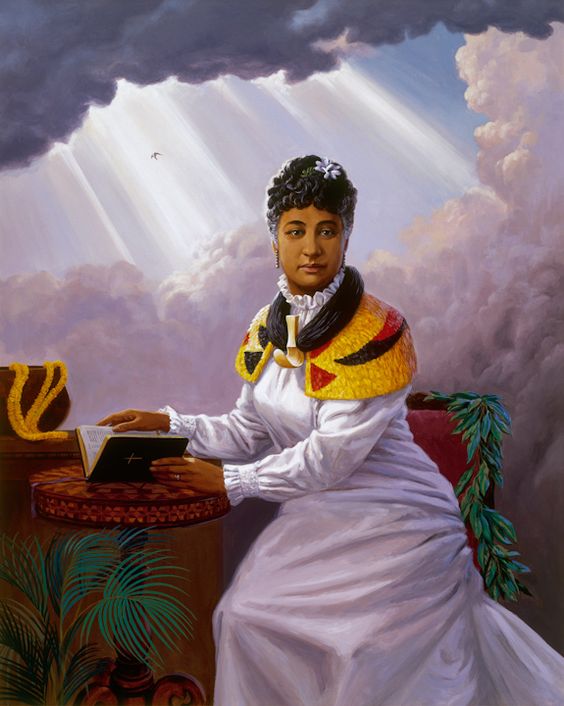

Bishop Memorial Chapel, the official church of the Kamehameha Schools was organized in 1908 and established a relationship with the Hawaii Conference, United Church of Christ. Sabbath services have been officiated on our campus since day one. The office of the Chaplain was established in 1898 and has been a reality since.
Our first Chapel building was on the grounds of what is known as Farrington High School today. It was near the lobby of the auditorium. It was built in 1897 by Charles Reed Bishop in honor and memory of his wife, Bernice Pauahi Bishop.
December 19, 1897. The chapel dedication took place on the sixty-sixth anniversary of Bernice Pauahi Bishop’s birth. KS scholars, teachers, administrators and community representatives filled the whole building. Ferns, asters and Hawaiian flags decorated the interior. The Reverend H. H. Parker, pastor of Kawaiaha‘o church, preached a sermon based on Matthew 7:24-28. ‘Everyone therefore which heareth these words of mind and doeth them shall be likened unto a wise man which built his house upon the rock.’ The singing of the KS student body and the trained choir directed by Cordelia Clymer was deemed fine by a local newspaper. That evening, a musicale with singing, recitation and responsive reading was held in the chapel at 7:30 p.m. ‘Praise God from Whom All Blessings Flow’ was the theme.
September 11, 1938. The Kamehameha ‘ohana held its final church service in the Chapel. After four decades of use, the preparatory department buildings and the surrounding land were purchased by the Territory of Hawai‘i for the Wallace R. Farrington High School.
The campus was moved in the 1930’s from the grounds of what we know as Bishop Museum into the hills of Kapālama. We used Ke‘elikōlani Auditorium on the campus as our Chapel. In celebration of our 100th year as a school, we built our second Bishop Memorial Chapel to allow us to reaffirm our rich Christian heritage. In other words, Christian education and worship shall always be a part of the total learning experience here at Kamehameha Schools.






Nui ke aloha O Pauahi ke Akua, kona po‘e Hawai‘i
(Great was Pauahi’s love for God and the Hawaiian people, whom she served)
The Kamehameha Schools is an educational institution endowed through the Last Will and Testament of Princess Bernice Pauahi Bishop. Pauahi was a devout believer of Jesus Christ and a faithful and compassionate leader of her Hawaiian people. Her life exemplified Christian and Hawaiian values.
When Pauahi was born, her father, Abner Paki planted a Tamarind tree in the yard, but placed Pauahi’s ‘iewe (afterbirth) in the ground first to supply nourishment to that tree. This was located in the center of downtown Honolulu at the corner of King St. and Bishop St. This is where the family home was located, and when the city wanted to build the road into downtown, they asked Mr. Bishop for part of his yard, and named the street after them-Bishop St. Across the street is Tamarind Park (all the trees in the park) and across the street is First Hawaiian Bank, the bank that Charles Reed Bishop founded.
Pauahi attended the Royal School and loved music, painting, gardening, horseback riding, reading, history and was an excellent writer, too. On Sundays they would attend Kawaiaha‘o church, which eventually became the home church of Princess Pauahi.
Not only did she sing in the choir, she also led it for a while. She was not only a student in the Sunday School, but she was a teacher as well. There is a story that is told that one day a call came into the pastor to go and visit a man and his family. The father was not doing so well. When the pastor got to the house, Pauahi was already cooking a meal in the kitchen for the family. She was a true servant of God.
The Will of Princess Pauahi is very important to the school. It gives us our marching orders and gives us direction. Pauahi actually named the school as printed in the Will, “to erect and maintain in the Hawaiian Islands two schools, each for boarding and day scholars, one for boys and one for girls, to be known as, and called the Kamehameha Schools.”
There are two characteristics that Pauahi defined as important for the students.
“I desire my trustees to provide first and chiefly a good education in the common English branches, and also instruction in morals and in such useful knowledge as may tend to make good and industrious men and women; and I desire instruction in the higher branches to be subsidiary to the foregoing objects.”
She directs that the adults whom would be giving that good moral character teaching should come from a Christian foundation. She said, “I also direct that the teachers of said schools shall forever be persons of the Protestant religion, but I do not intend that the choice should be restricted to persons of any particular sect of Protestants.”